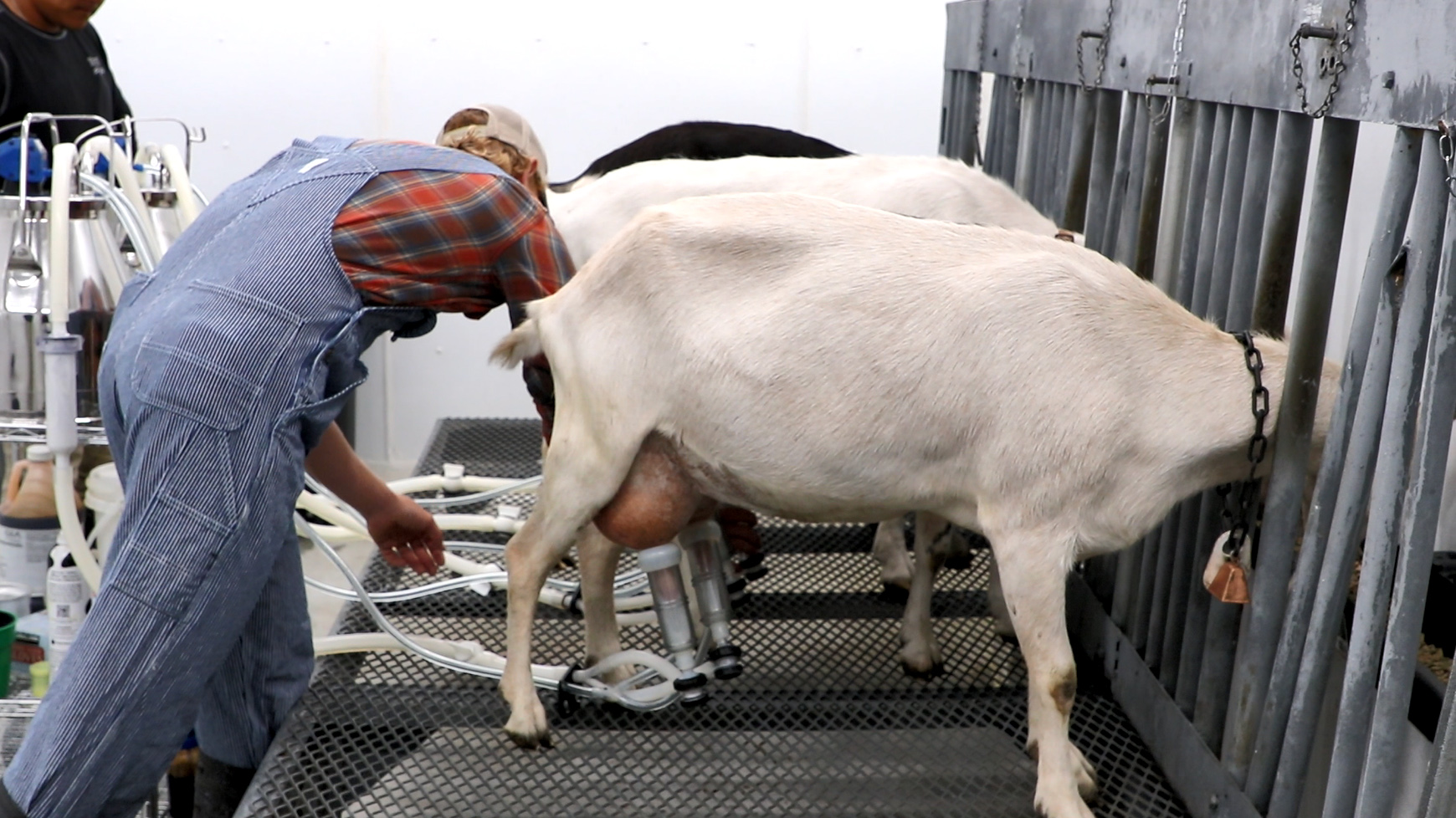Renewable Energy Helps Alaska’s First Goat Dairy

When thinking of renewable energy, a person’s first thought does not immediately go to cheese production. However, in the island community of Kodiak, renewable energy plays a big part in allowing a micro-dairy stay in business.
ACEP’s Amanda Byrd was recently in Kodiak filming for a documentary on food security and Alaska agriculture. She visited a local goat dairy, the only U.S. Department of Agriculture-approved Grade A goat milk dairy in Alaska.
The Kodiak Baptist Mission uses electricity to pasteurize its goat milk. The process, which happens overnight, requires raising the temperature of the goat milk. The energy demand, while small in a community sense, is still a lot for the small dairy. The constant price of energy allows the small farm to plan for its future without energy cost concerns.
Kodiak Electric Association boasts a renewable energy portfolio that includes 33 megawatts of hydropower, 9 megawatts of wind energy, 3 megawatts of battery storage and two 1-megawatt flywheels. Renewable sources meet about 99.8% of the community’s energy demand, which averages 18 megawatts and peaks at 22 megawatts. This portfolio creates a steady energy production and keeps the residential energy costs to 16 cents per kilowatt-hour.
Goat milk is the most-consumed milk in the world. The Kodiak dairy creates milk twice a day that is turned into cheeses, ice cream, soaps and other products. The mission dairy is hoping other farmers around the state will see the opportunity to start a goat dairy, and help Alaska and the United States move to more goat milk consumption.
Goats are milked at the Kodiak Baptist Mission microdairy. Photo by Amanda Byrd.



